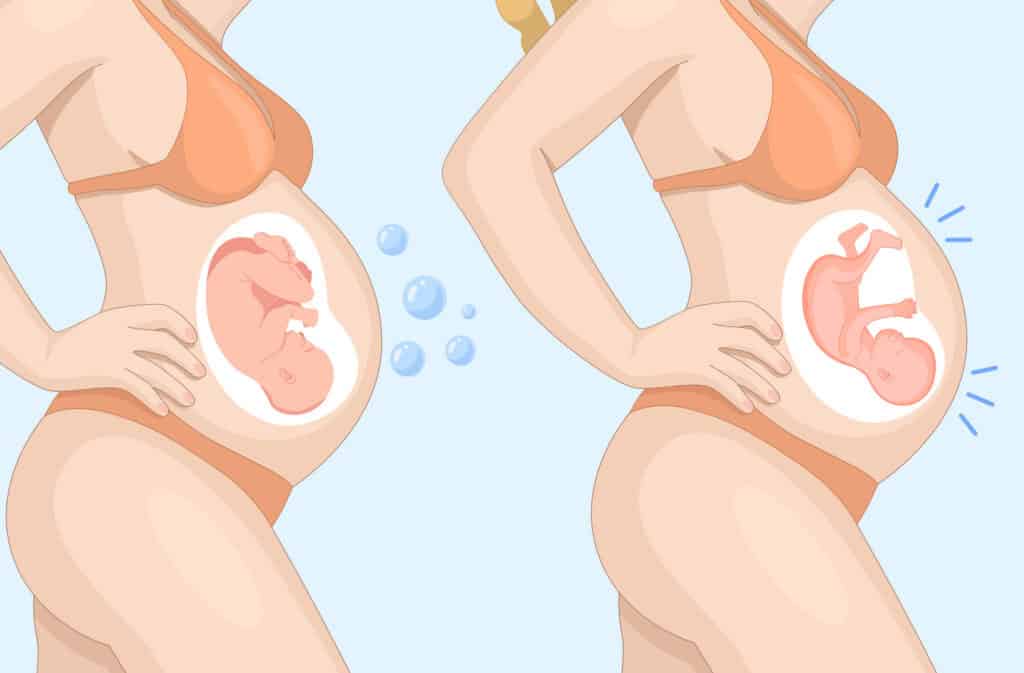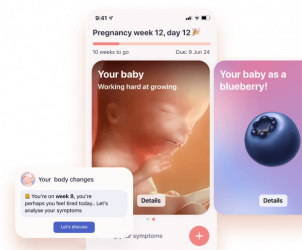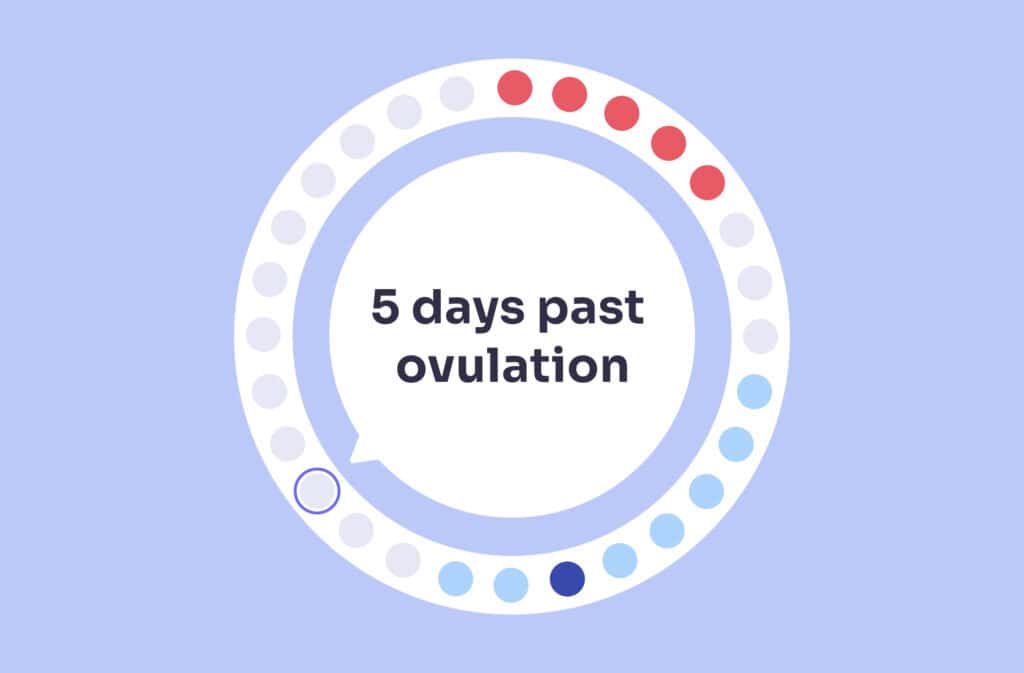Femia > Health Library > Pregnancy > Pregnancy health > Difference between gas bubbles and baby moving: How to tell?
Difference between gas bubbles and baby moving: How to tell?

- Updated Feb 24, 2025
- Published
CRAFTED BY HUMAN
Crafted by human At Femia, we provide accurate and up-to-date information at every stage of your journey, from trying to conceive, pregnancy and postnatal support. All content is created by a real person based on in-depth research and own professional experience. Femia ensures that you will receive expert advice, strict accuracy and a personalized approach from our authors/medical experts. Learn more about our editorial policy.
FACT CHECKED
Fact checked At Femia Health, we maintain the highest standards of editorial excellence in delivering content focused on helping you conceive, guiding you through pregnancy, and supporting you postpartum. Explore our content review principles to learn how we ensure the accuracy and quality of our health and lifestyle tips for every stage of your journey.
Baby movements often feel like flutters or light kicks, becoming more distinct as pregnancy progresses. Gas bubbles tend to be more localized, often on the lower left side of your abdomen.
As you advance in your pregnancy, you’ll likely notice patterns in your baby’s movements, such as increased activity after meals or in the evening.
Some of the most memorable moments of your pregnancy will be feeling your baby move. However, knowing whether the sensation you are experiencing is because of gas or baby moving can be a little confusing, especially if this is your first pregnancy. While most of the flutters you feel in your belly are likely to be your baby moving around inside your womb, it’s reassuring to have a clear way of differentiating these movements from unruly pregnancy gas.
For the most part, you’ll be able to notice some subtle signs that help you identify your baby’s movements. On some days, however, it may be impossible to differentiate them from pregnancy gas. Rest assured, both are safe to experience and relatively non-concerning during pregnancy.

Understanding the sensations: gas bubbles vs. baby moving
Every pregnancy journey is unique, so understanding how your body is changing during pregnancy can help you differentiate one new sensation from the other.
As you will soon notice, feeling gassy, uneasy, and bloated is relatively commonplace, starting early in pregnancy. The main reason for your increased gut discomfort is the pregnancy hormone progesterone. This hormone relaxes and slows down your digestive system. With time, this results in the build-up of uncomfortable gas, which you can feel bubbling around in your tummy.
The discomfort of unruly gas while pregnant is similar to the gassy feeling you may have experienced before pregnancy. This means, for the most part, familiarity will help you identify the feeling. However, since you will be experiencing many other changes and new sensations during your pregnancy, it can be difficult to tell when it is gas vs baby kicks.
In early pregnancy, the first baby movements you feel (known as quickening) can be difficult to tell apart from gas bubbles—they might feel like light flutters, bubbles, or pressure.
However, as your pregnancy progresses, the kicks, head bumps, and tiny wiggles become more prominent, and you should soon be able to tell gas bubbles apart from your baby’s movements. The differences might become noticeable earlier on if this is your second or third pregnancy.
👉Find out more: Baby fruit size by week: A trimester-by-trimester guide to your growing little one
What are the key differences between gas and baby movements?
As your pregnancy progresses, you’ll start to feel your baby move. This exciting milestone is called “quickening,” and it’s a special moment for many moms-to-be!
Most women usually start to feel their baby’s movements between 18 and 20 weeks of pregnancy. If this is not your first pregnancy, you might feel these movements a bit earlier, possibly around 16 weeks.
Other factors can also influence when you start to feel your baby moving. These can include your pregnancy weight, age, and placental placement (movements are felt later with anterior, or forward-facing placentas).
The first movements you sense will feel like flutters inside your belly. Some women may liken it to a popping sensation, similar to popcorn kernels popping. You may not feel all the sensations, but it might feel different depending on what part of their body your baby moves.
Your baby will also be moving around several times a day, and you can feel the movements anywhere on your pregnancy belly depending on where your baby comes into contact. Anterior placentas may dampen some of the movements, increasing your sensation of your baby’s movements more on the sides of your tummy.
On the other hand, you may frequently notice gas bubbles on the left lower side of your abdomen. Sometimes the feeling can also radiate along the left flank of your abdomen. Most gas lasts for a few minutes, and it can even dissipate when you either change your position or release the gas.
Your baby’s movements are going to last longer and feel more consistent, especially later on in your pregnancy, as your baby grows. Later on, when your baby moves to the head-down position, kicks and flutters will be more concentrated in the upper part of your uterus.
So, based on the location, frequency, and how long the sensation lasts, you’ll eventually be able to differentiate between your baby moving or gas with ease.

Can gas feel like a baby kicks?
Early in pregnancy, when you might not have felt your baby’s first movements yet, you might mistake the sensation of trapped gas for quickening. Since your baby is smaller at the beginning of the second trimester, when the first movements are felt, the force of the kicks can also be small and feel similar to gas bubbling up in your tummy.
The first of your baby’s kicks or jabs can be felt anywhere in your belly, which might also include places where you previously recorded the uneasy discomfort of gas.
However, as your pregnancy progresses, both your baby and your uterus will slowly grow in size. This is when you will notice your baby’s movements to be more distinct from the feeling of gas bubbles. You may also be able to see the kicks through your tummy, depending on the force with which your baby is moving around.
Recording these movements can provide you assurance of what feels like a normal sensation for you and what doesn’t. If you feel you need a little more help to understand what you are feeling, especially if this is your first pregnancy, schedule a check-in with your obstetrician.
👉Find out more: Why choline is essential during pregnancy: Benefits, sources, and supplements
How often should I feel my baby’s movements in the womb?
Keeping a count of your baby’s movements becomes more important in the last trimester of your pregnancy. The movements will become more noticeable at this time, because your baby now takes up quite a lot of room in your tummy.
It’s common to feel like your baby is more active in the evening, when you wind down for the day, but it is mainly because you are relaxing and able to pay more attention to the different types of sensations within your abdomen. These movements become more noticeable if you have had caffeine or sugar with dinner, since these stimulants are shared with your baby through the bloodstream.
Around the 28th week of your pregnancy, your doctor might ask you to start keeping track of your baby’s movements. This is called “fetal kick counting,” and it’s a simple way to check on your little one’s well-being.
Here’s how it usually works:
- Choose a time when your baby is usually active.
- Count how long it takes to feel 10 movements (kicks, rolls, or jabs).
- It might take anywhere from 30 minutes to a couple of hours to reach 10 movements.
Every baby is different, and it can take some time before you feel regular movements.
Regular movement is considered reassuring. You may want to check in with your healthcare provider if you notice a decrease in movement from what you are used to feeling in a day.
Tips for distinguishing between gas and baby’s movements
It can be stressful if you are unable to distinguish between your baby’s movements and gas bubbles at first, especially if you are unsure whether a sensation you are feeling requires further medical attention.
Rest assured, most women take some time to get the hang of understanding the different sensations they feel during each phase of pregnancy.
Since early fetal movements can seem quite similar to gas bubbles, try to identify distinct differences between the two. You may observe gas bubbles more after a heavy meal, or if you have been sitting for too long. Unruly gas is often associated with discomfort until you pass the gas.
Your baby’s movements, on the other hand, can feel like butterflies fluttering in your tummy. They can be noticed in different areas of your pregnant belly depending on where your baby is moving around. However, gas is more commonly noticed on the left side of your abdomen, where your colon is primarily located.
Sensations felt if you are actively stimulated, such as when you are listening to some music or recently indulged in a sugary snack, are more likely your baby’s movements. These are consistent for a while before they subside.
As your pregnancy progresses, you will get more accustomed to your baby’s movements and often predict what might favor increased movement. It is good to know that this is different for all women. There is no one right way to feel your baby move inside your uterus.
When should you consult your healthcare provider?
Experiencing both your baby’s movements and the occasional gas bubbles is normal. As your pregnancy progresses, you will become more aware of the differences between the two sensations.
If you feel anything out of the norm for your pregnancy, do not hesitate to consult with your healthcare provider. This could be if you notice your baby’s movements have slowed down or are not as strong as they used to be. Additionally, if you experience any pain associated with your baby’s movements, consider checking in with your doctor.
While most gas during pregnancy resolves on its own, experiencing progressive nausea, pain, or vomiting should prompt a visit to your doctor for personalized care.
Questions from the Femia community
Can certain foods and beverages change how I experience my baby moving or gas?
Yes, it most definitely can. Having foods such as broccoli, beans, cauliflower, or carbonated beverages can increase gas and bloating. This discomfort may last longer, making it difficult to assess your baby’s movements. Conversely, sugar and caffeine can increase your baby’s movements, making them more noticeable over any lingering gas.
Can other digestive issues, such as bloating or indigestion, mimic my baby’s movements?
Prolonged gas, indigestion, or even constipation can feel like your baby is moving around in your belly. Since this discomfort may last for a while before you experience relief, it can be relatively difficult to differentiate the bloating from your baby’s movements.
Can the position of the placenta affect how I feel my baby’s movements?
If your placenta is positioned anteriorly, which is in the front lining of your uterus, you may not feel your baby’s kicks so prominently. This is because the placenta acts as a cushion for your baby’s movements. In such a case, you may notice movements more on the sides of your belly, which can make it slightly more challenging to differentiate from sensations such as gas bubbles.
The bottom line
Differentiating between gas bubbles and your baby’s movements can take some time. If this is your first pregnancy, the early phases, when you think it might be your baby sending you a signal from inside, can feel relatively similar to gas bubbling in your tummy. However, as your pregnancy progresses, you will notice the distinct features of your baby’s kicks, such as times your baby is most active, areas in your belly where the movements are more prominent, and the consistency of the movements.
Any discomfort you feel during your pregnancy or concerns you have about your baby’s health should be discussed with your healthcare provider for reassurance and individual care.
References
- Alqudah, M., et al. “Progesterone Inhibitory Role on Gastrointestinal Motility.” Physiological Research, no. 2, Apr. 2022, pp. 193–98. https://doi.org/10.33549/physiolres.934824.
- Huecker, Braidi R., et al. “Fetal Movement.” StatPearls – NCBI Bookshelf, 5 Feb. 2023, www.ncbi.nlm.nih.gov/books/NBK470566.
- Akkaya, Hatice, and Barış Büke. “A Frequently Asked Question: Is It Normal Not to Feel My Baby’s Movements Yet?” Journal of the Chinese Medical Association, vol. 81, no. 8, Aug. 2018, pp. 742–46. https://doi.org/10.1016/j.jcma.2017.07.014.
- Mangesi, Lindeka, et al. “Fetal Movement Counting for Assessment of Fetal Wellbeing.” Cochrane Library, vol. 2015, no. 10, Oct. 2015, https://doi.org/10.1002/14651858.cd004909.pub3.
- Hayes, Dexter J. L., et al. “Effect of Encouraging Awareness of Reduced Fetal Movement and Subsequent Clinical Management on Pregnancy Outcome: A Systematic Review and Meta-analysis.” American Journal of Obstetrics & Gynecology MFM, vol. 5, no. 3, Mar. 2023, p. 100821. https://doi.org/10.1016/j.ajogmf.2022.100821.
- Linde, Anders, et al. “Fetal Movement in Late Pregnancy – a Content Analysis of Women’s Experiences of How Their Unborn Baby Moved Less or Differently.” BMC Pregnancy and Childbirth, vol. 16, no. 1, June 2016, https://doi.org/10.1186/s12884-016-0922-z.

Discover the symptoms at 5 days past ovulation (5 DPO), signs of pregnancy, and find out why it’s still too early for accurate pregnancy test results. Expert advice from Femia.

Why won’t my 7-month-old sleep? Click to learn what a 7-month sleep regression is, what causes it, what the signs are, and how to help your baby sleep better.

If you’re wondering, ‘Can you drink coffee while pregnant?’ you’ll be relieved to hear that it’s considered safe to consume moderate amounts of caffeine while pregnant.

